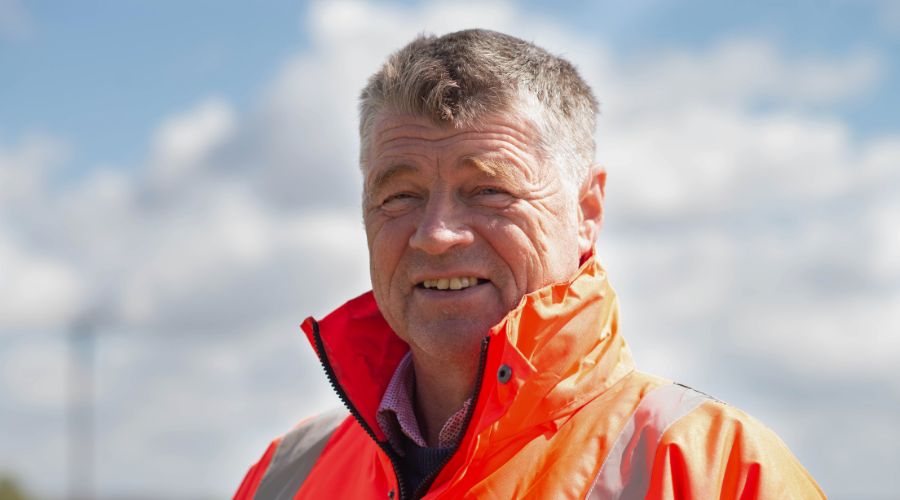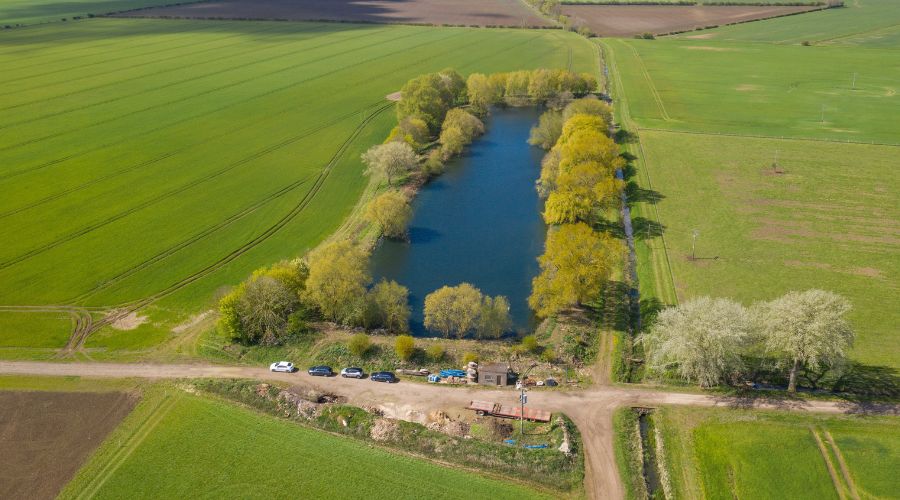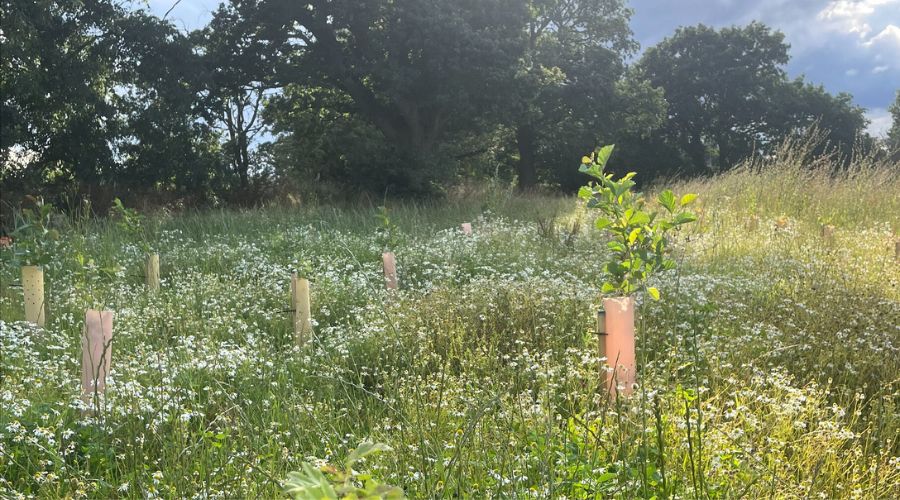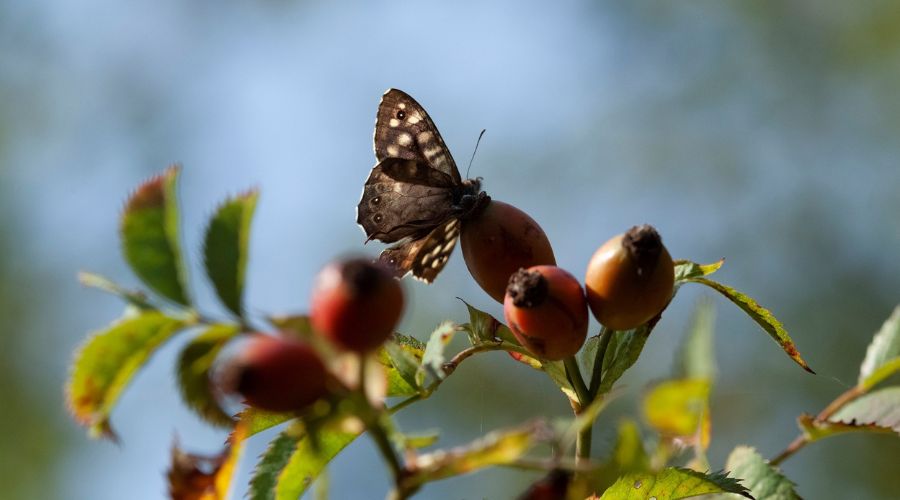Planting trees for wildlife, the environment and future generations
11th September 2023
Farmer Robert Moore made it his goal to leave his 356-hectare arable unit in a better state for the environment and wildlife than when he took it on in 1988. To do this, he has balanced sustainability and profitability in his approach to farming.

He and his family grow wheat, barley and oilseed rape, and graze sheep and cattle, as well as running an agricultural plastic recycling plant at Barff Farm, Lincolnshire. When the Moores bought the farm, it was a highly productive operation growing solely winter crops. Over time, the management of black-grass became increasingly difficult, which affected their profits. Robert began to think about how the business could be run more sustainably and efficiently.
“We moved to the farm in 1988 and it had almost no hedges or trees – historical maps show there used to be over 90 small fields here which had been reduced to just 13. While the land was good productive, arable soil, black-grass had become a serious issue.”
In partnership with Woodland Trust
Looking to increase biodiversity, enhance the visual impact of the land, and make better use of underperforming areas, he started researching planting schemes. Following a recommendation from a neighbour, he applied to the Woodland Trust’s MOREwoods scheme, which provides advice and funding for landowners looking to plant trees.
Robert worked closely with an adviser from the Trust to design a scheme to meet his specific needs. Together, they identified less productive areas which were suitable for planting, and assessed drainage maps to make sure field drains were not compromised. Native species such as rowan, an excellent food source, were chosen to encourage biodiversity.

They planned a substantial woodland, measuring 100×600 metres and split into three segments, with a track running through it for access. Planting began in January 2021 with a total of five hectares of trees (1,600 trees per hectare) planted next to Paunch Beck, which runs into the River Ancholme at the edge of his land.
“We have a stream that goes right through the centre of the farm with the track alongside it. So, we decided to put the woods south of the track, so any shadows coming from the woods would be on the track and not the crop over the dyke.”
Enhancing wildlife habitats with hedgerows
Aware of the steep decline in biodiversity in the British countryside, Robert was keen to create corridors for wildlife by linking his new woodland with hedgerows. Having received MOREwoods funding, he became aware of the MOREhedges scheme and went on to plant 1km of hedgerow.
“We have a big reservoir on site that’s utilised for the recycling side of the business. So we interlinked the reservoir with hedges to the new plantations of wood for wildlife tracks to go down.”

Planting trees and hedgerows for future generations
Robert’s project took six months from application to planting the final tree. The subsidy allowed him to plant more woodland at a lower cost, although the return on investment isn’t straightforward.
“The benefit is in taking bad land out of production and planting a viable resource that has values you can’t quantify – like the visual impact and effect on the farm as an overall asset,” he explains.
The MOREwoods scheme provided a 60% subsidy, with Robert choosing to use Woodland Trust contractors for planting. The hedging project received a 75% subsidy, using a self-appointed contractor.
“Working with the Woodland Trust was very easy from start to finish,” he adds. “The application was simple and straightforward … and they even managed the Environmental Impact Assessment process which was required due to the size of area being planted.”
He anticipates the benefits will grow as the woodland and hedgerows mature. “We’re enhancing the farm for future generations. Yes, it’s going to take a fair while, but the plan is to leave the farm better than when we received it – not saying it wasn’t right when we got it because it was. It was the right farm for the time, but times have changed.
“The changes we’re making now are not only restoring the productive areas to a more sustainable system. We’ve taken out less productive land, squaring up fields and restoring some of the lost hedgerows and trees. The value of carbon sequestration alongside crop protection, soil fertility and the boost for wildlife are all long-term gains.”
Woodland Trust working with farmers
The Woodland Trust has decades of experience working side by side with farmers to harness the benefits of trees for business, nature and climate. The MOREwoods and MOREhedges schemes make it easy and affordable to plant trees on your land, whether you are looking to shelter crops and livestock from our increasingly wild weather, diversify your business, capture carbon or create habitats for wildlife. The schemes have already helped over 3,000 landowners with their planting projects – that’s 4 million new, native trees in the ground.

What funding and support do the schemes offer?
MOREwoods and MOREhedges subsidise up to 75% of the cost of woodland and hedgerow creation. They provide the advice and guidance needed for projects to be successful; from site suitability and species selection to planting, tree protection and management.
All farmers, landowners and land managers are welcome to apply providing the following eligibility criteria are met – all you need is a grid reference and a map of the area to be planted.
MOREwoods
- Eligible projects must plant at least 0.5ha of new woodland, with an average of 1,000-1,600. trees/hectare.
- The total area can be made up of multiple blocks of land, each 0.1 hectare minimum.
The cost to the landowner depends on project size, species choice and tree protection. On average, self-planted projects cost 40-80p per tree plus VAT, or £1-£1.80 per tree plus VAT if planted by a Trust-arranged contractor. A one-hectare site at the recommended 1,000-1,600 trees per hectare would therefore cost around £900-2,000.
MOREhedges
Qualifying schemes comprise 100 metres or more of new hedging with a large tree planted every six metres. The hedging must connect with:
- At least 0.2 hectares of existing or newly planted woodland (0.1ha in Scotland), or
- Woodland via established hedgerows within 500m of the new hedge.
Applications for MOREwoods must be submitted by 1st November if you wish to receive your trees this winter. Apply by 1st December to plant a MOREhedges this winter.

The Woodland Trust is a registered charity (294344 and SC038885). The Woodland Trust logo is a registered trademark.
